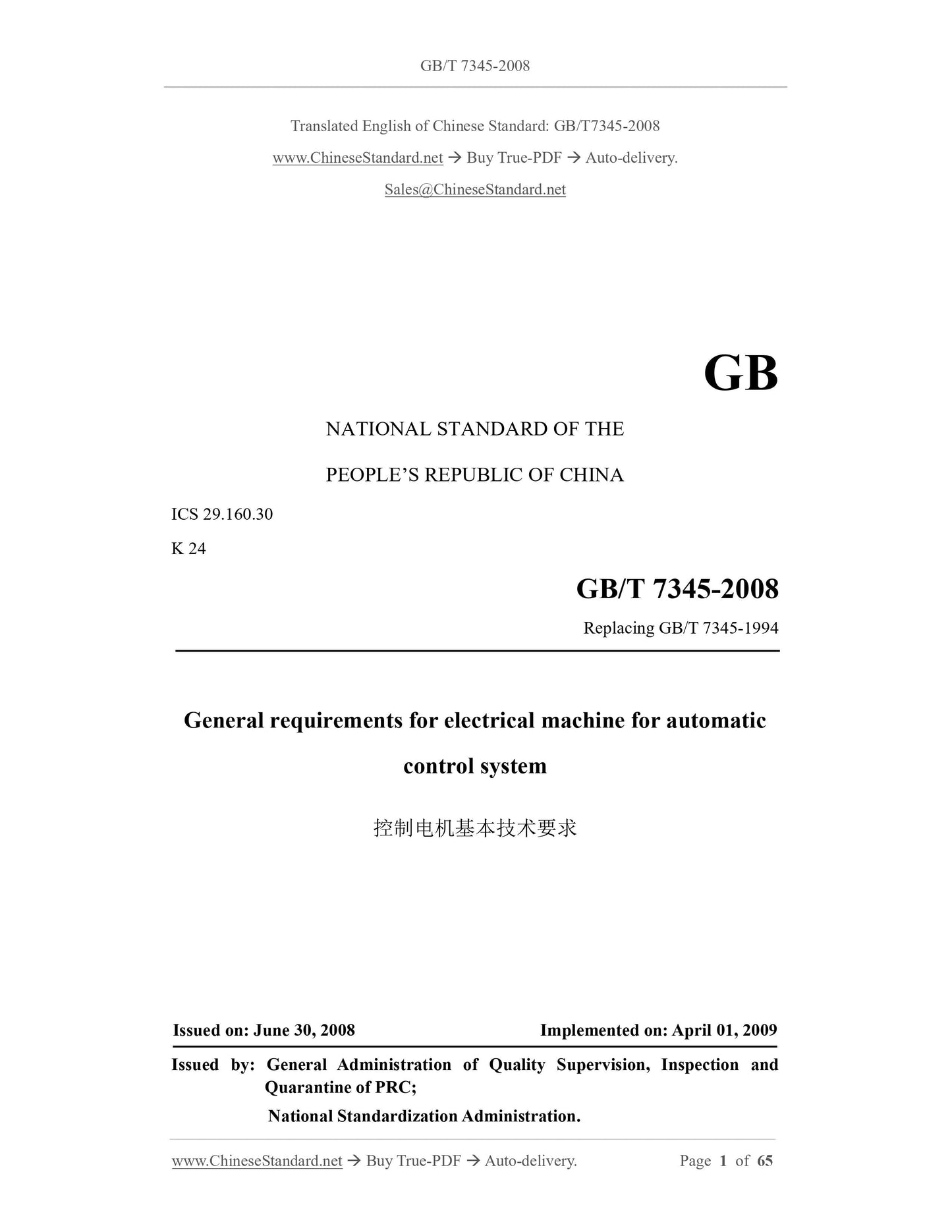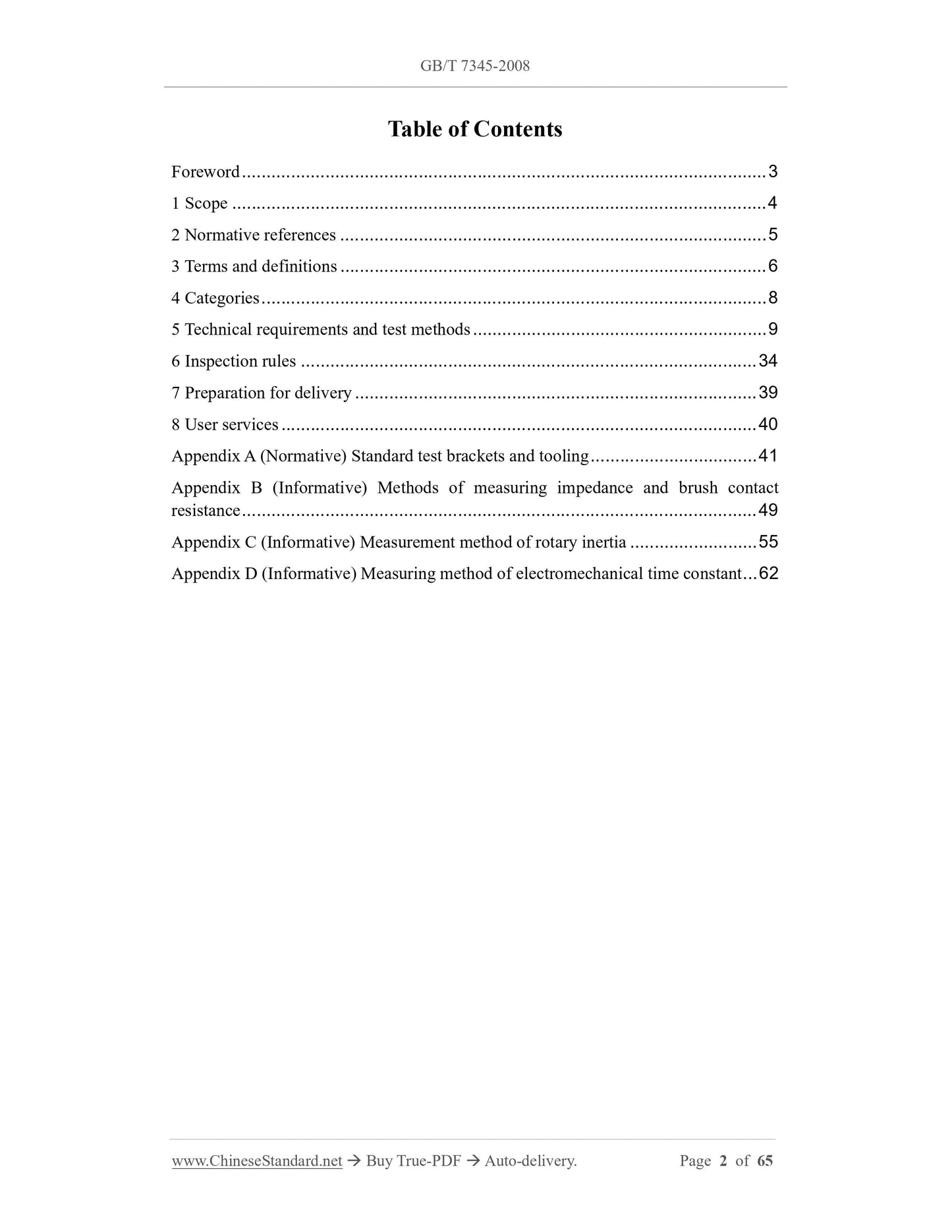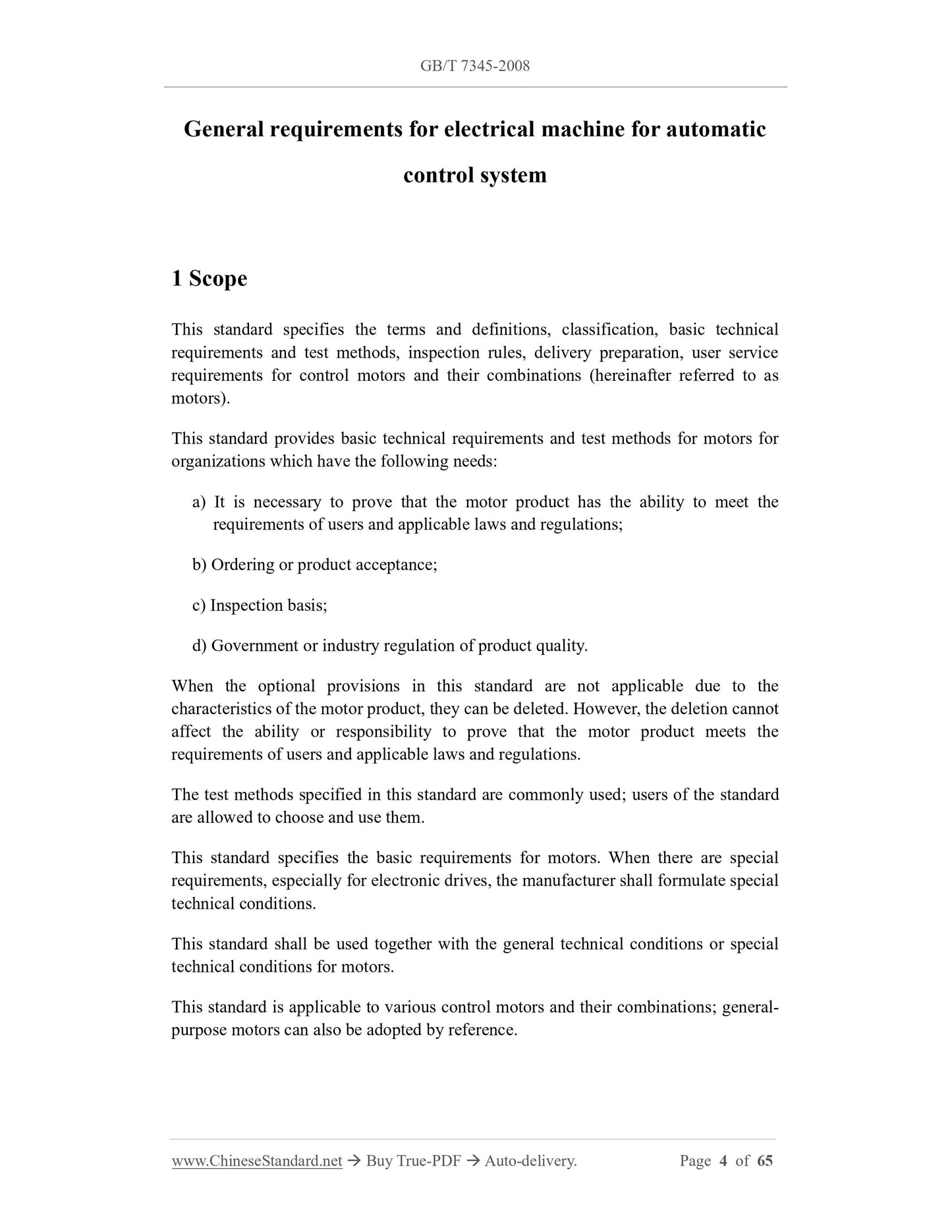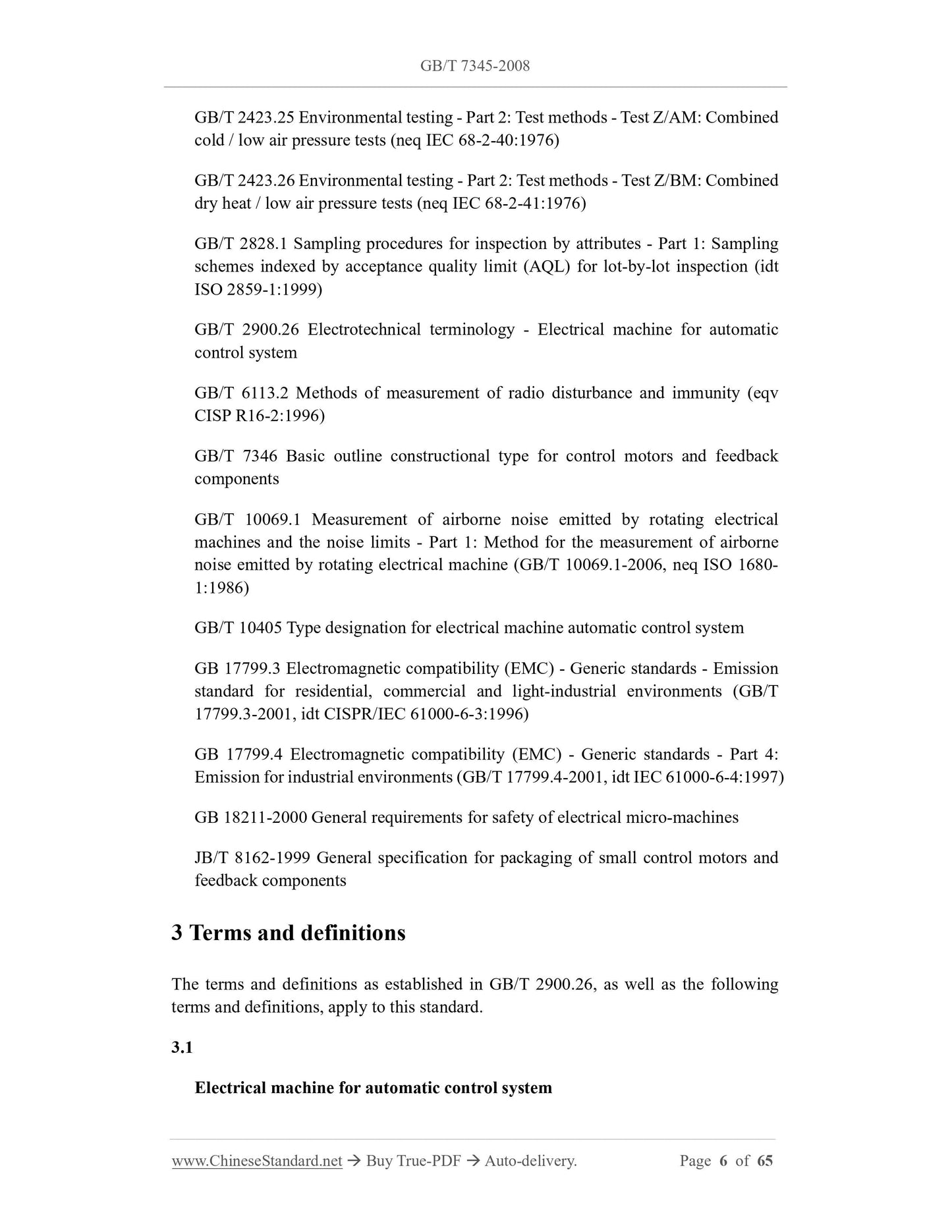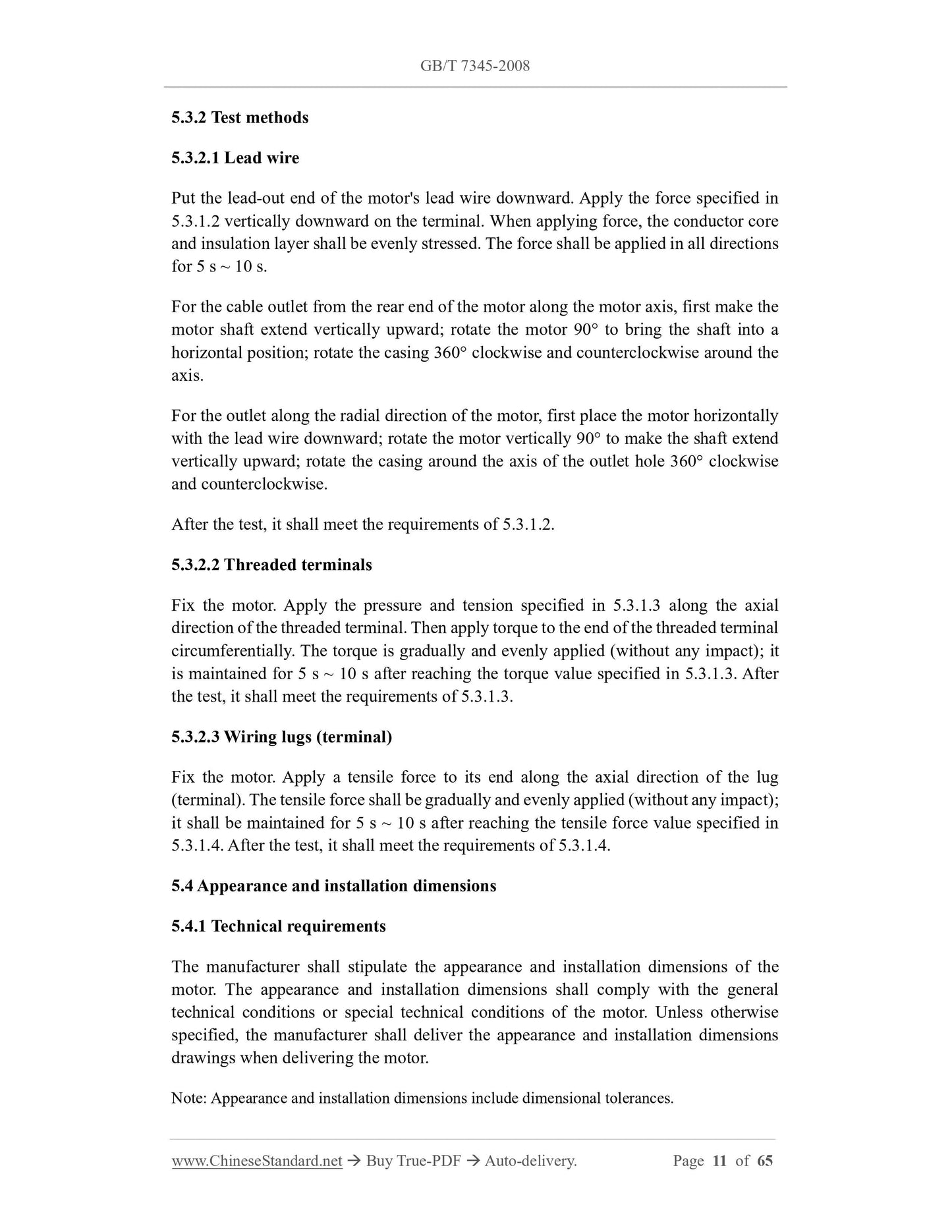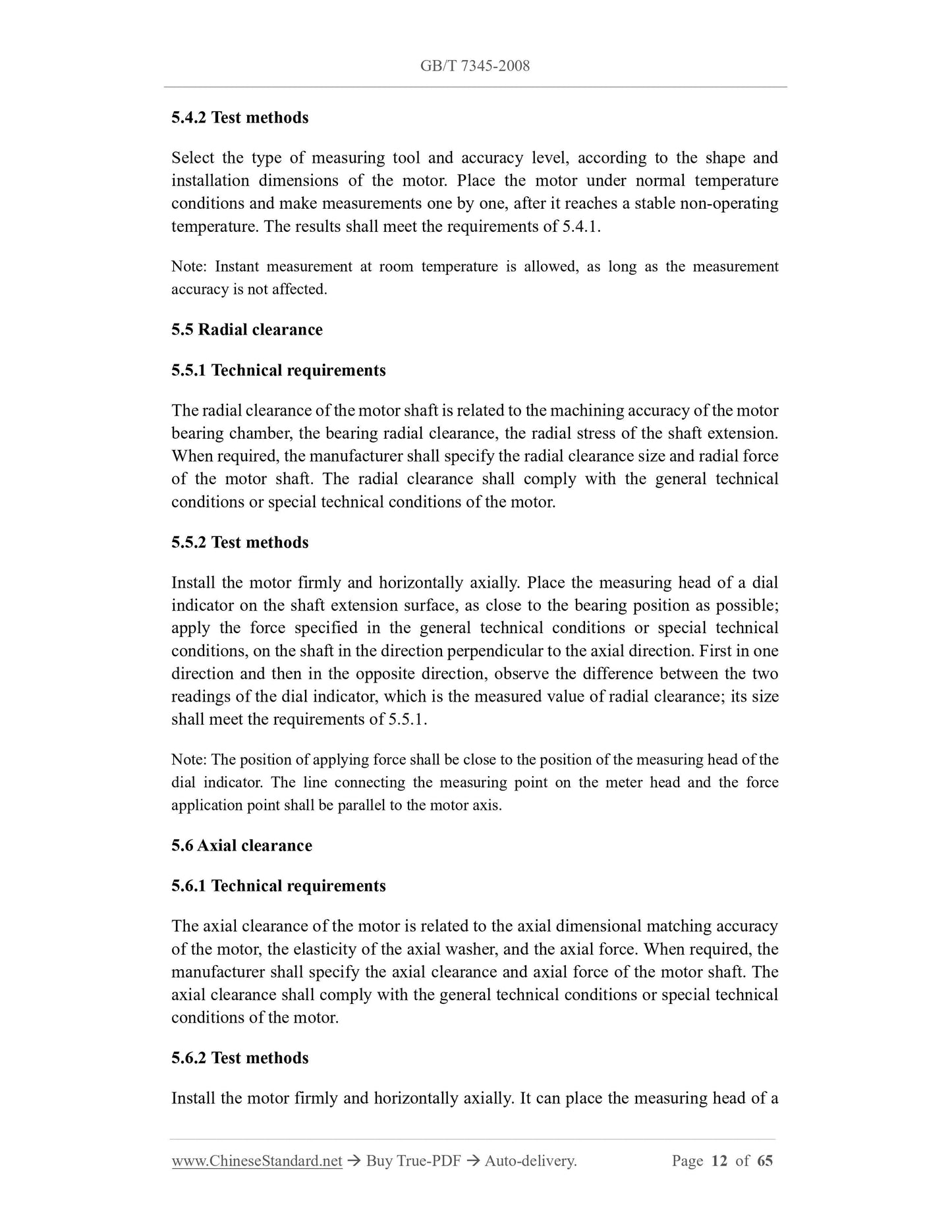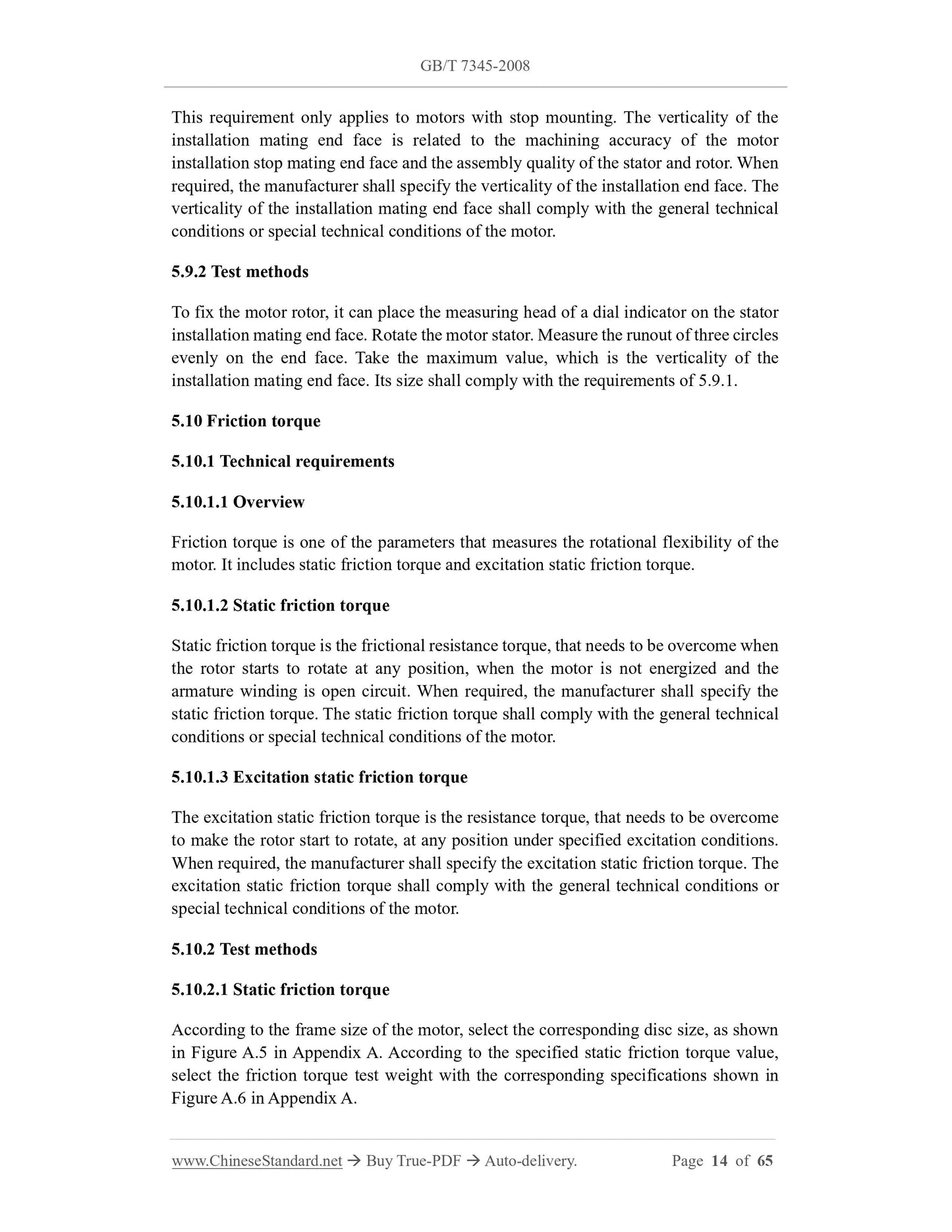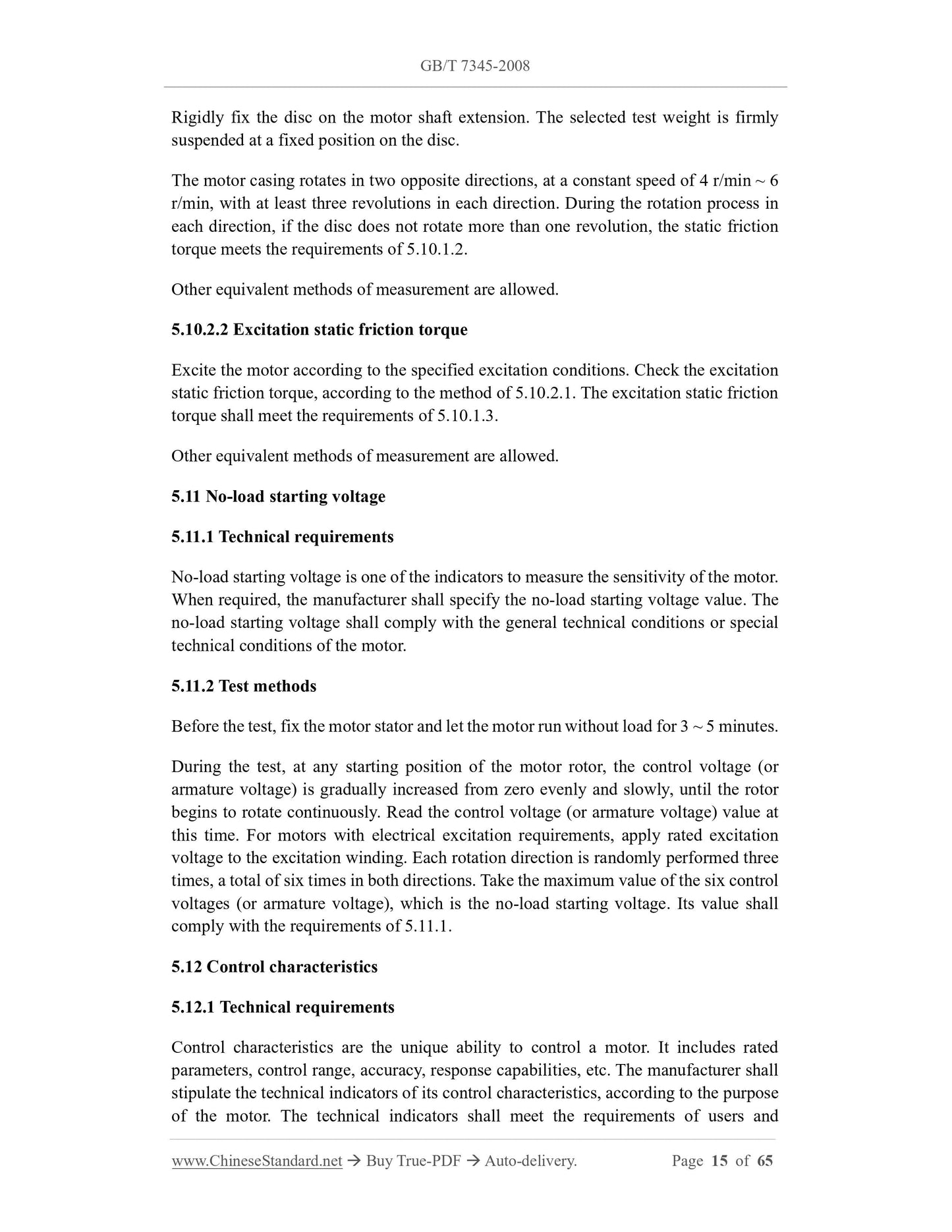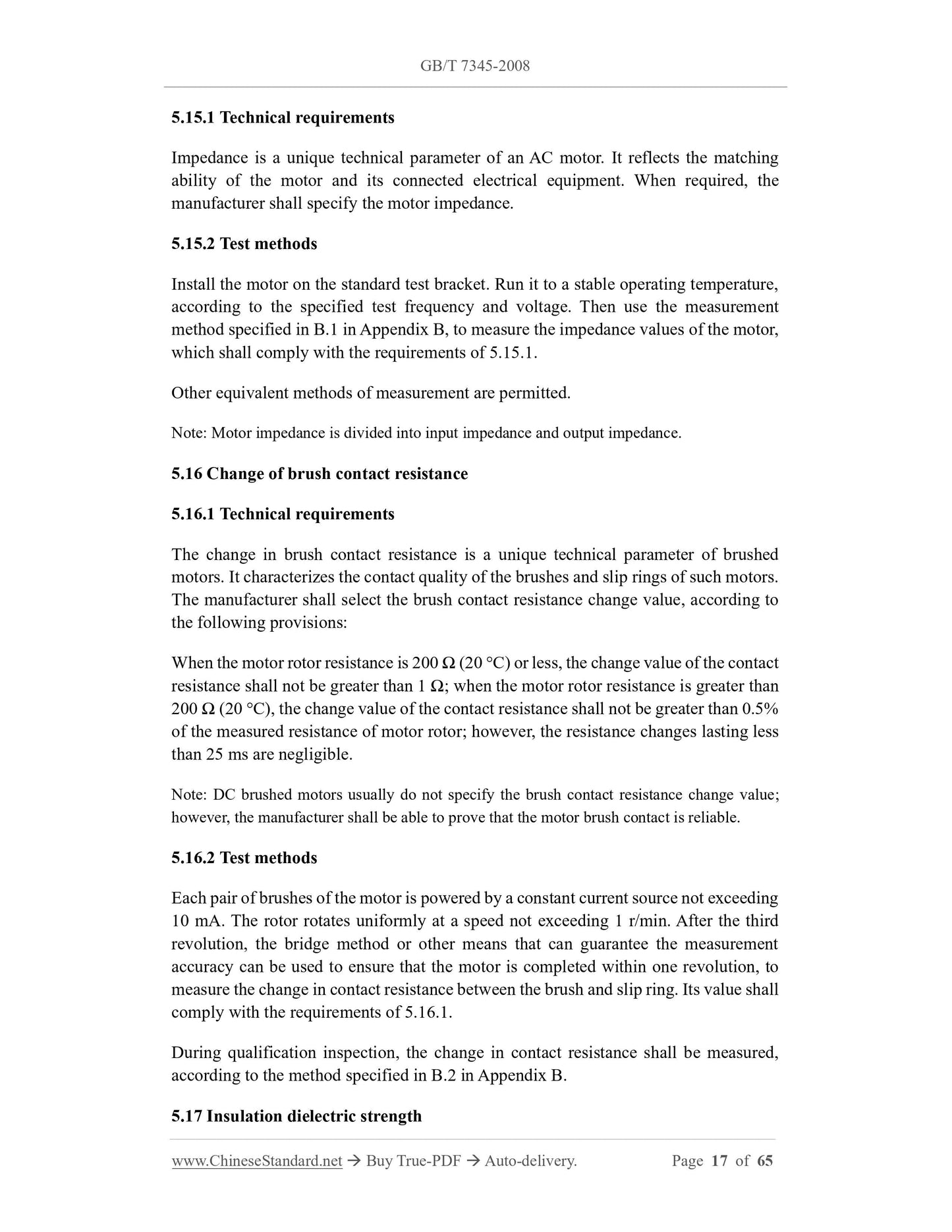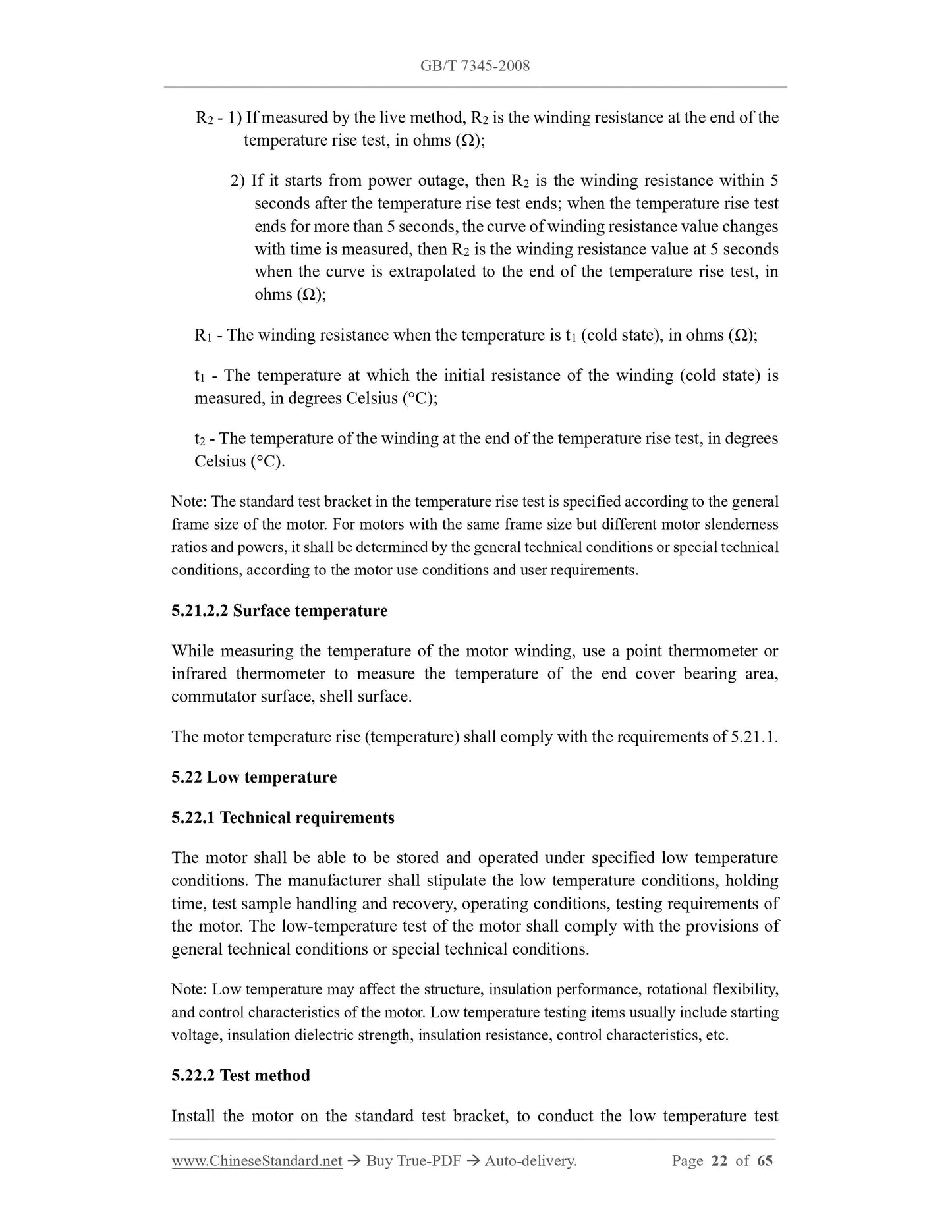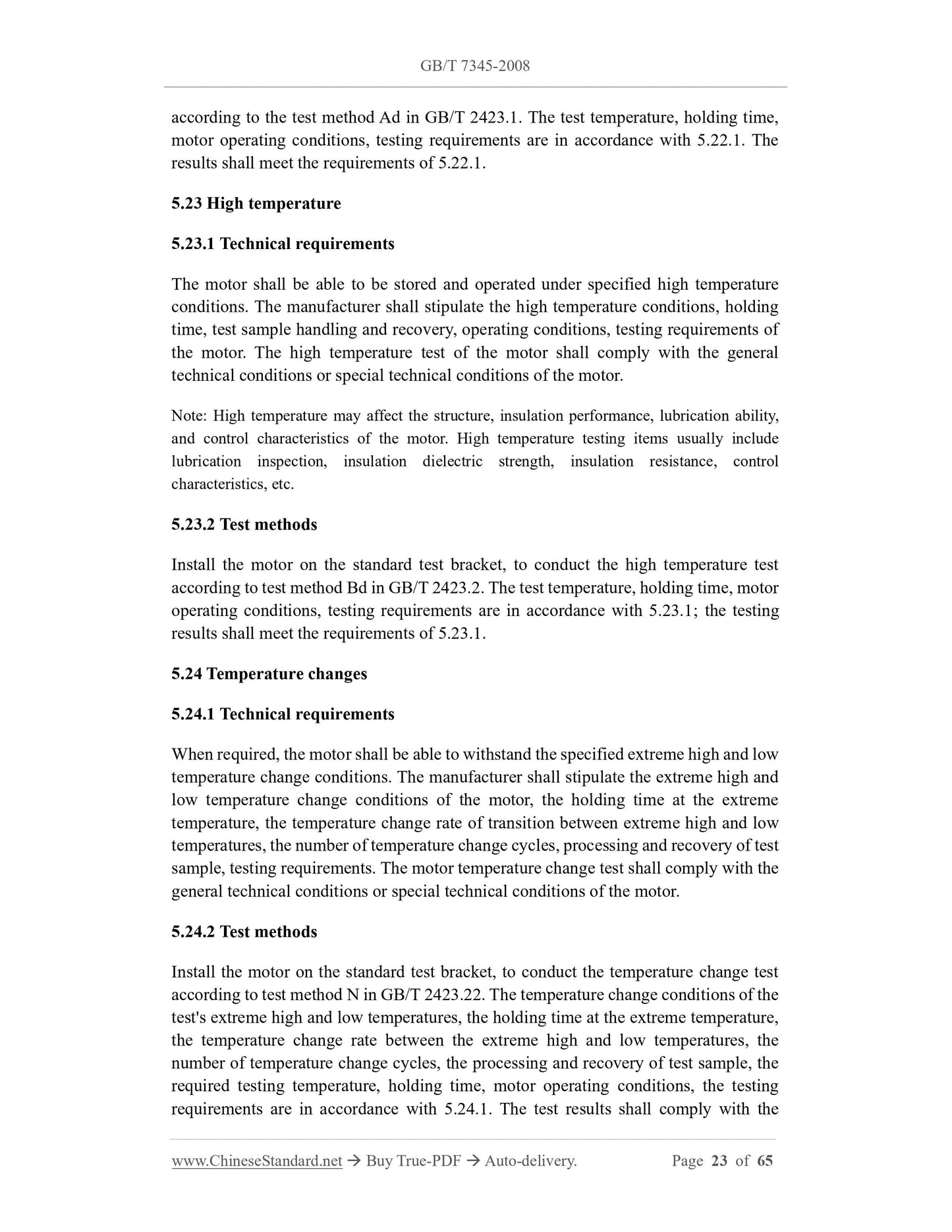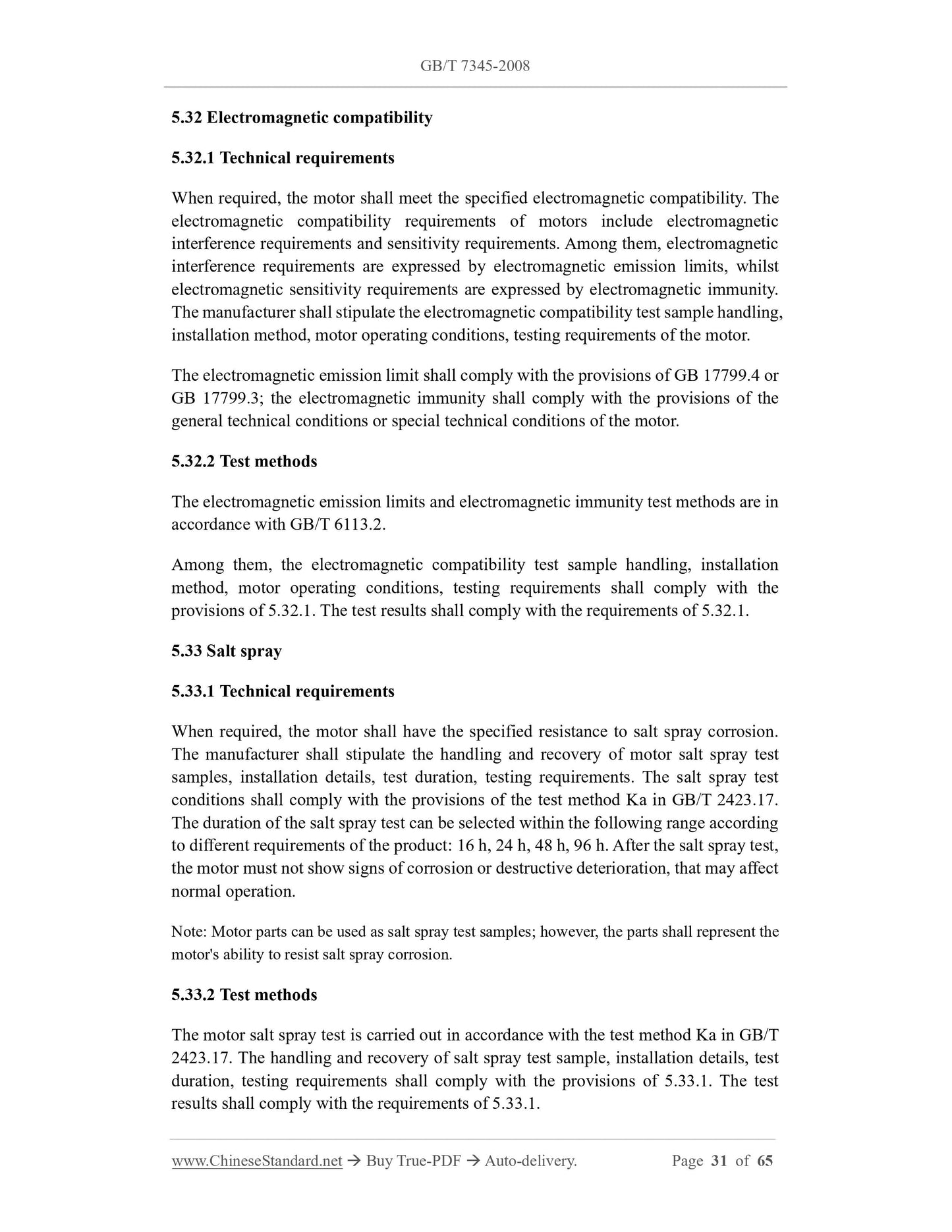1
/
of
12
www.ChineseStandard.us -- Field Test Asia Pte. Ltd.
GB/T 7345-2008 English PDF (GB/T7345-2008)
GB/T 7345-2008 English PDF (GB/T7345-2008)
Regular price
$890.00
Regular price
Sale price
$890.00
Unit price
/
per
Shipping calculated at checkout.
Couldn't load pickup availability
GB/T 7345-2008: General requirements for electrical machine for automatic control system
Delivery: 9 seconds. Download (and Email) true-PDF + Invoice.Get Quotation: Click GB/T 7345-2008 (Self-service in 1-minute)
Newer / historical versions: GB/T 7345-2008
Preview True-PDF
Scope
This standard specifies the terms and definitions, classification, basic technicalrequirements and test methods, inspection rules, delivery preparation, user service
requirements for control motors and their combinations (hereinafter referred to as
motors).
This standard provides basic technical requirements and test methods for motors for
organizations which have the following needs.
a) It is necessary to prove that the motor product has the ability to meet the
requirements of users and applicable laws and regulations;
b) Ordering or product acceptance;
c) Inspection basis;
d) Government or industry regulation of product quality.
When the optional provisions in this standard are not applicable due to the
characteristics of the motor product, they can be deleted. However, the deletion cannot
affect the ability or responsibility to prove that the motor product meets the
requirements of users and applicable laws and regulations.
The test methods specified in this standard are commonly used; users of the standard
are allowed to choose and use them.
This standard specifies the basic requirements for motors. When there are special
requirements, especially for electronic drives, the manufacturer shall formulate special
technical conditions.
This standard shall be used together with the general technical conditions or special
technical conditions for motors.
This standard is applicable to various control motors and their combinations; general-
purpose motors can also be adopted by reference.
Basic Data
| Standard ID | GB/T 7345-2008 (GB/T7345-2008) |
| Description (Translated English) | General requirements for electrical machine for automatic control system |
| Sector / Industry | National Standard (Recommended) |
| Classification of Chinese Standard | K24 |
| Classification of International Standard | 29.160.30 |
| Word Count Estimation | 45,425 |
| Date of Issue | 2008-06-30 |
| Date of Implementation | 2009-04-01 |
| Older Standard (superseded by this standard) | GB/T 7345-1994 |
| Regulation (derived from) | Announcement of Newly Approved National Standards No. 11 of 2008 (No. 124 overall) |
| Issuing agency(ies) | General Administration of Quality Supervision, Inspection and Quarantine of the People's Republic of China, Standardization Administration of the People's Republic of China |
| Summary | This standard specifies the control of motor and combinations thereof (hereinafter referred to as the motor) the terms and definitions, classifications, basic technical requirements and test methods, inspection rules, ready for delivery and customer service requirements. This standard provides organizations with the following requirements of the motor basic technical requirements and test methods: a) needs to demonstrate electrical products to meet user requirements and applicable laws and regulations, the ability, b) an order or product acceptance, c) test basis, d) government or industry regulatory product quality. When the optional provisions of this standard does not apply because the motor Product features, you can delete them, but confirmed the deletion does not affect electrical products to meet user requirements and applicable laws and regulations, the ability or obligation. |
Share
